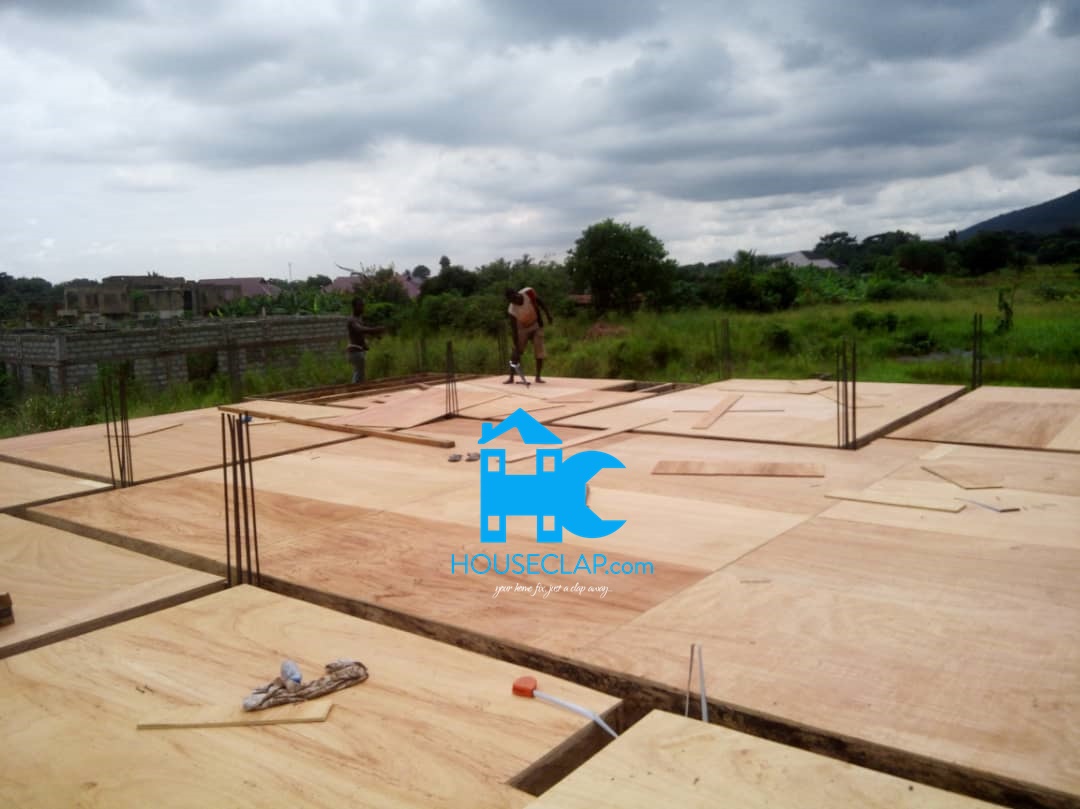Understanding the basics of building construction saves you the surprises with all the processes and expenses. The steps involved in starting a building project are explained in this article. There may be variations as every project is unique and follows a different design and construction process. In general, the basic steps involved in a building project are briefly explained;
- Planning
- Permits
- Preparation of construction Site
- Foundation construction
- Superstructure construction
- Punch list
- Building warranty period
-
Planning
The planning involves three major steps:
- Developing the Building Plan
- Analysing the Finance
- Selecting the Construction Team
A team of engineers and architect pay a visit to the project site to check the quality of location before anything commences. The team looks out for soil type, land orientation, road access, whether the land is prone to flood etc. The building plan is then developed based on the owner’s requirements and budget.
Once the plan is in hand, the finance and total cost is estimated. The estimates calculated include:
- The material cost
- The construction cost
- The labour cost
- Miscellaneous
Based on the estimated cost, either a bidding process is performed or the project is awarded to a known contractor. The contractor and the owner must agree to a contract based on which the project is implemented. The contract mentions the start and completion period, necessary guides, exclusions and inclusions.
Tika Mall Africa is one of the largest hardware stores in Greater Accra for quality and affordable building materials. You will also be fortunate to find some stores within the locality of your project. If you are also looking for a construction company to handle your project in a timely fashion Conciv Engineering might just be your stop.
-
Permits and Insurance in Building Construction
Before starting a building project, the owner must acquire the necessary permits from the authorities. In Ghana, the municipality of the project determines which office to visit for your permit. For instance if your project is within Tema then the right office to visit is Tema Developmental Assembly. A construction work conducted without permits results in delays. demolition or huge fines.
Possessing insurance for the required parties saves the owner and the contractor from unexpected and unfortunate incidents during construction which could later result in law suits.
-
Site Preparation
From here, the actual construction process starts. Based on the site and building plan, necessary excavations, levelling, and filling can be undergone to prepare the site. The necessary excavation for utilities, power, water and sanitation lines, temporary storage facilities are prepared. Mostly the works needed to set up the utilities are prepared.
This is followed by an inspection from the government officials. Inspections are performed at different stages on structural, building codes, the utilities, HVAC, electrical works etc. After the completion of the whole project, a final inspection is performed.
-
Foundation / Substructure Construction
Building structures are generally constructed on concrete foundations. Based on the soil type and water table level of the area, the foundation chosen can vary. If necessary, soil testing is performed to check the bearing capacity. Shallow foundations are required for low-rise buildings. For high-rise buildings, a pile foundation is employed.
Once the foundation is selected, the soil is excavated to construct the foundation. It is performed based on the foundation layout. Formworks are placed in the foundation trenches and reinforcement is placed based on the foundation detailing design prepared in the planning stage.
The reinforcement works performed by the contractor is periodically checked by the engineer in charge. The concrete mix of the required proportion is poured into formwork and is cured to form the finished foundation.
-
Superstructure Construction

The superstructure is constructed once the substructure is complete. Generally, a framed structure is developed which is later finished with masonry walls. Adequate windows and exterior doors are placed based on the building plan. Other works coming under this section are:
*Construction of roofs or siding
*Installation of heating, ventilation and air conditioning
*Providing adequate electric and water lines connection.
*Provide insulation works as required to protect from lighting
*Provision of waterproofing to the walls.
*Plastering and finishing the walls and surfaces
*Flooring works
*Exterior and Interior Painting
-
Punch List
Finally we get to my favourite part. Once the project is complete, the contractor inspects the whole work one by one and makes a punch list. Those structural units or areas that were not constructed properly or are below the quality level is listed in the punch list. This is later corrected by the contractor in charge.
-
Warranty Period
Once the project is complete and handed over to the owner, the contractor specifies a warranty period. Within this period, any defects found in the building must be fixed and replaced by the contractor in charge. The warranty for materials and appliances are obtained from manufacturers and suppliers.
Conclusion
In these times where people are just putting up buildings, it’s important for you in starting your building project just the right way. The rate at which the local contractors are putting up the structures, you might not be able to identify the right plan for starting a building project. Your only bet is to call the expert to help you by giving you guidelines, possible timelines as well as estimates that is devoid of unnecessary charges and a good fit for your project and pocket as well.

